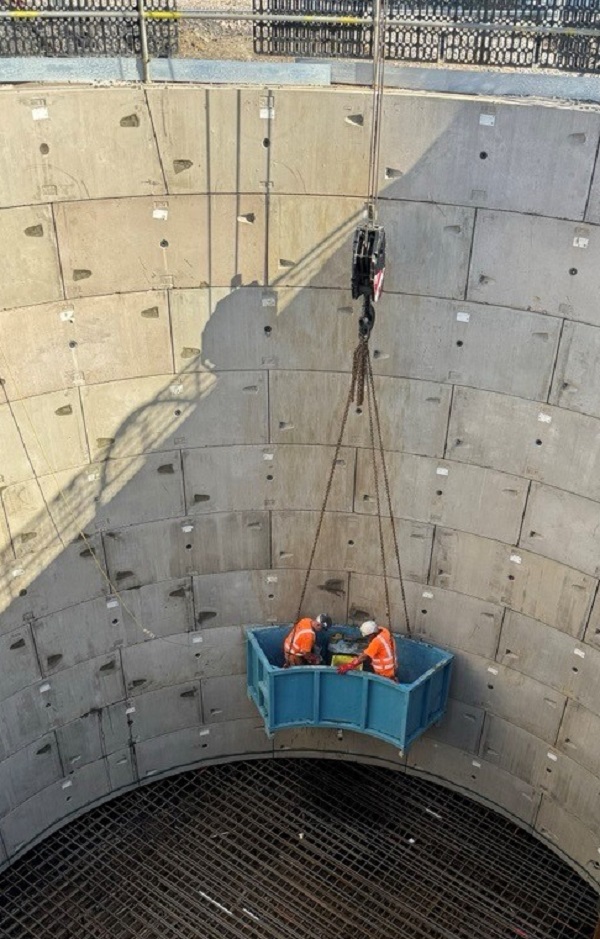THE number of hours that sewage flowed into the River Frome between Iron Acton and Winterbourne rose by more than a third last year.
Figures from the Environment Agency show that combined sewer overflows – where rainwater and foul waste water from homes is mixed together and washed into waterways during heavy rain – discharged into the river for a total of 5,580 hours at eight sites in the area during 2024.
The increase was recorded as Wessex Water, the company responsible for the area’s waste water disposal and treatment, worked on a £5 million project to alleviate the problem.
Environment Agency chair Alan Lovell said the figures show “we are still a long way off where we need to be to stop unnecessary sewage pollution”.
The agency’s figures for spills from combined sewer overflows (CSOs) last year showed that at the eight CSOs discharging into the Frome between Iron Acton and Winterbourne – at New Cog Mill, Church Road, Bridge Way, Clyde Road, Rectory Road, Nightingales Bridge, Sunny Acres Footbridge and Harcombe Farm – a total of 604 separate spills were recorded by monitoring equipment – up from 520 in 2023.
The total number of hours when discharges were recorded was 5,580 – equivalent to 232 days, and a rise of 37.5% on the 2023 figure of 4,058 (169 days).
The CSO with the most spills was at Church Road in Frampton Cotterell, which overflowed 123 times for a total of 1,691 hours last year, up from 104 spills for 1,137 hours in 2023.
The site is one of three where Wessex Water has recently finished work on huge concrete storage tanks to keep mixed rainwater and sewage out of the river.
It says the Church Road tank can hold as much as 225,000 litres of water until flooding has subsided and it can be released into the sewer system for treatment.

At Sunny Acres, Watley’s End – near a new tank that holds 480,000 litres of waste water – CSO spills happened 116 times last year. That was down on 124 incidents in 2023, but the total number of hours spills were recorded rose from 1,156 to 1,347.
At Nightingales Bridge, Watley’s End – close to a new tank holding 180,000 litres – there were 107 overflow incidents last year, for a total of 1,057 hours – up from 92 incidents and 923 hours in 2023.
Overflows are ‘outdated’ – Wessex Water
A Wessex Water spokesperson said: “While not as wet as the previous year, 2024 again saw prolonged periods of intense rainfall in our region, which resulted in licensed storm overflows automatically operating to prevent flooding.
“Many of these discharges occurred due to groundwater entering the sewerage network, often from private pipes, which can result in overflows operating long after rainfall events.
“Nearly a million litres of additional storage have been constructed in Frampton Cotterell at three locations, a £5 million investment that was completed earlier this year, to help reduce instances of storm overflows operating automatically.
“In recent years, we’ve also invested £15 million to lay around five kilometres of gravity sewer connecting Iron Acton, to the north of Frampton Cotterell, with Bradley Brook, to the north of Bristol, providing more than eight million litres of internal sewage storage.
“We agree that overflows are outdated and we’re spending £3 million every month on schemes to reduce how often they operate and have outlined plans to more than double this investment in the five-year period to 2030.”
The company said the affected storm overflows are “high groundwater sites”, where groundwater enters the sewerage network, often from private pipes, and the number of overflows was related to the amount of rain that mixes with flows in sewers.
The spokesperson said: “We believe rainwater should be better managed and returned to the environment close to where it falls rather than draining into sewers.”
National figures showed a 2.9% decrease in the number of sewage spills compared to 2023, with spill durations down by 0.2% overall.
Environment Agency chair Alan Lovell said the data from monitoring “provides vital intelligence that drives targeted investment”.
An Environment Agency map showing how where spills happen, how often and for how long can be found online here.
Top picture: This Wessex Water tank at Watley’s End is one of three finished this year, which have been built to tackle the overflow problem


